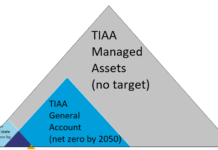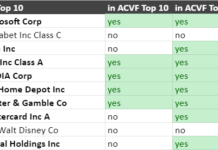John Petersen
Friday afternoon was a strange time for Axion Power International (AXPW.OB). After trading 200,000 shares early in the day, Axion filed $28 million mixed shelf registration with the SEC at about one o’clock and the fly on the wall reported the filing within minutes. It seems that some stockholders were spooked by the news and assumed that Axion would sell stock right away instead of waiting for the fall deal season. Their knee-jerk selling shoved another 1.1 million shares into the market in three hours and made Friday the second heaviest trading day in Axion’s history.
When I saw the news I was pleased to learn that Axion plans to do its next funding round as a public offering instead of a private placement and is taking the necessary steps to make that vision a reality. I guess the big difference between me and the street is that I understand that filing a shelf registration statement is a lot like applying for a hunting license. It’s the beginning of the financing process, not the end. Since I’ve never seen a financing transaction go from start to finish in less than 90 days, I don’t believe a transaction is likely before September.
All in all, yesterday reminded me of a Norville Barnes line from the Coen Brothers comedy, The Hudsucker Proxy:
– “Relax, it’s only natural in a period of transition for the more timid element to run for cover.”
Elephant hunters live for times like these. They instinctively know that sellers make themselves irrelevant when they hit the sell button and from that point on the only thing that matters are the buyers because they’re the ones who’ll determine the future stock price. Since Friday afternoon was such a crazy time, I’m going to step out of my normal comfort zone, try to explain how markets for individual securities develop and function, and offer a bit of advice from a professional with 30 years in the trenches. I can only hope that somebody besides me will find the discussion interesting.
Stock markets are simple creatures that always obey the laws of supply and demand. Each trade has two sides – a willing seller and a willing buyer. When sellers outnumber buyers prices fall. When buyers outnumber sellers prices rise. When sellers and buyers are balanced prices remain stable. No matter what direction a stock is heading, the root cause always boils down to the balance between buyers and sellers.
There are two basic types of public companies; earnings-driven companies that are “bought” in the top-tier “weighing machine” markets and event-driven companies that are “sold” in the lower-tier “voting machine” markets. Bought stocks are well covered by analysts, trade on the basis of earnings, offer moderate to high levels of security and have predictable trading ranges that approximate fair value. Sold stocks draw little attention from analysts, trade on news and events, offer little or no security and tend to have volatile and unpredictable trading patterns. Both types of companies are essential to a healthy economy but they’re not necessarily appropriate for every investor.
There are also two basic types of stock market investors; hot money and patient money. Hot money buys a security with a relatively short investment horizon and relatively modest performance goals. The archetype of hot money is the day trader who buys in the morning and sells before noon to pay for his lunch. Patient money, on the other hand, buys with a longer investment horizon and more ambitious goals. The archetype of patient money is Warren Buffett who takes forever to make an investment decision but almost never sells. Every investor needs to know his own style and pick his investments accordingly because the surest way to lose money is to invest patient in a hot stock or invest hot in a patient stock.
The most useful mental image I’ve found to describe a market for a particular company is three barrels sitting side by side. The barrel in the center represents willing sellers. The barrel on the left represents the hot money buyers. The barrel on the right represents the patient money buyers. Every time a sell order is placed, new shares move into the center barrel. Every time a buy order is filled, those shares move out of the center barrel and into either the right or the left hand barrel. Market makers will theoretically buy stock and hold it in inventory, but those inventories are rarely substantial.

Elephant hunters are by definition patient. We buy stocks that are fundamentally sound, but unknown or unloved, and hold them until something happens that changes the market’s perceptions and expectations and creates new buying demand. We avoid stocks that are favorites of the hot money crowd. Over time, as elephant hunters congregate in a particular stock, the patient money barrel tends to get very full while the hot money and willing sellers barrels tend to run dry. When those two cheap and easy supply barrels run dry and an event occurs that drives new buying demand, the market price must rise to a level where some of the elephant hunters are willing to lighten up and take a profit.
It takes years to learn how to screen stocks and figure out whether they appeal primarily to hot money or patient money. It can take decades to learn how to trade intelligently. Some tricks and tools that I’ve found useful over the years include:
- Divide the public float by the 3 month average trading volume. This calculation tells you the number of days required to trade the entire float. Companies that trade their entire float more than six times a year are usually hot money favorites. Companies that trade their float less than four times a year are usually patient money favorites.
- Track moving average volumes. Everybody watches moving average prices. In my experience a more useful tool is a medium- to long-term moving average volume analysis. My favorite periods are 50-days, 100-days and 200-days because they tend to eliminate the spikes, clarify the trends and isolate cases of consistent accumulation over time. If you can find a stock that has a relatively stable price and steadily increasing volume it’s a sure sign that the elephant hunters are doing their thing.
- Look for upcoming events that will matter to outsiders. Between bulletin boards and financial websites investors can drill down into detailed information on almost any stock or sector that interests them. Unfortunately blogs like mine appeal to a very limited audience and the events that move stocks are ones that are important enough to draw the attention of people who’ve never heard of the “thought leaders” in a sector.
- Don’t buy a stock unless you can write a full page on why you want to own it. Far too many investors fall into the trap of the hot tip or the neighborly advice without understanding what they’re buying. If you can’t write a detailed explanation of why you own a stock, you shouldn’t own it.
- Don’t buy more than you can sleep with. It’s easy to fall in love with a story or an idea and we all develop odd emotional attachments to our favorite stocks. No investment is worth an hour of lost sleep.
- Take little profits on the way up.
Nobody ever lost money by leaving something on the table for the next buyer. Some of my most painful losses over the years have come from reaching for the brass ring on my whole position. There is no better feeling in the world than buying a position, selling enough to recover your out-of-pocket cost, and swinging for the fences on the house’s money. - Devote as much effort to selling decisions as you do buying decisions. The financial press is full of stories about how a $10,000 IPO investment in WalMart would be worth a bojillion dollars today. The reality is that there are very few WalMart bojillionaires because most of the IPO investors sold too soon. The reason is people don’t spend enough time analyzing selling decisions. Even if you have a big gain on a stock, profit for its own sake is the worst reason to sell because then you’ll be left with a wad of cash that you have to put to work somewhere else. Making a pile on Company X and then losing it all on Company Y is a far more common story than most will admit.
- Remember Warren’s Wisdom. “Investors should remember that excitement and expenses are their enemies. And if they insist on trying to time their participation in equities, they should try to be fearful when others are greedy and greedy when others are fearful.”
Disclosure: Author is a former director of Axion Power International (AXPW.OB) and owns a substantial long position in its common stock.








